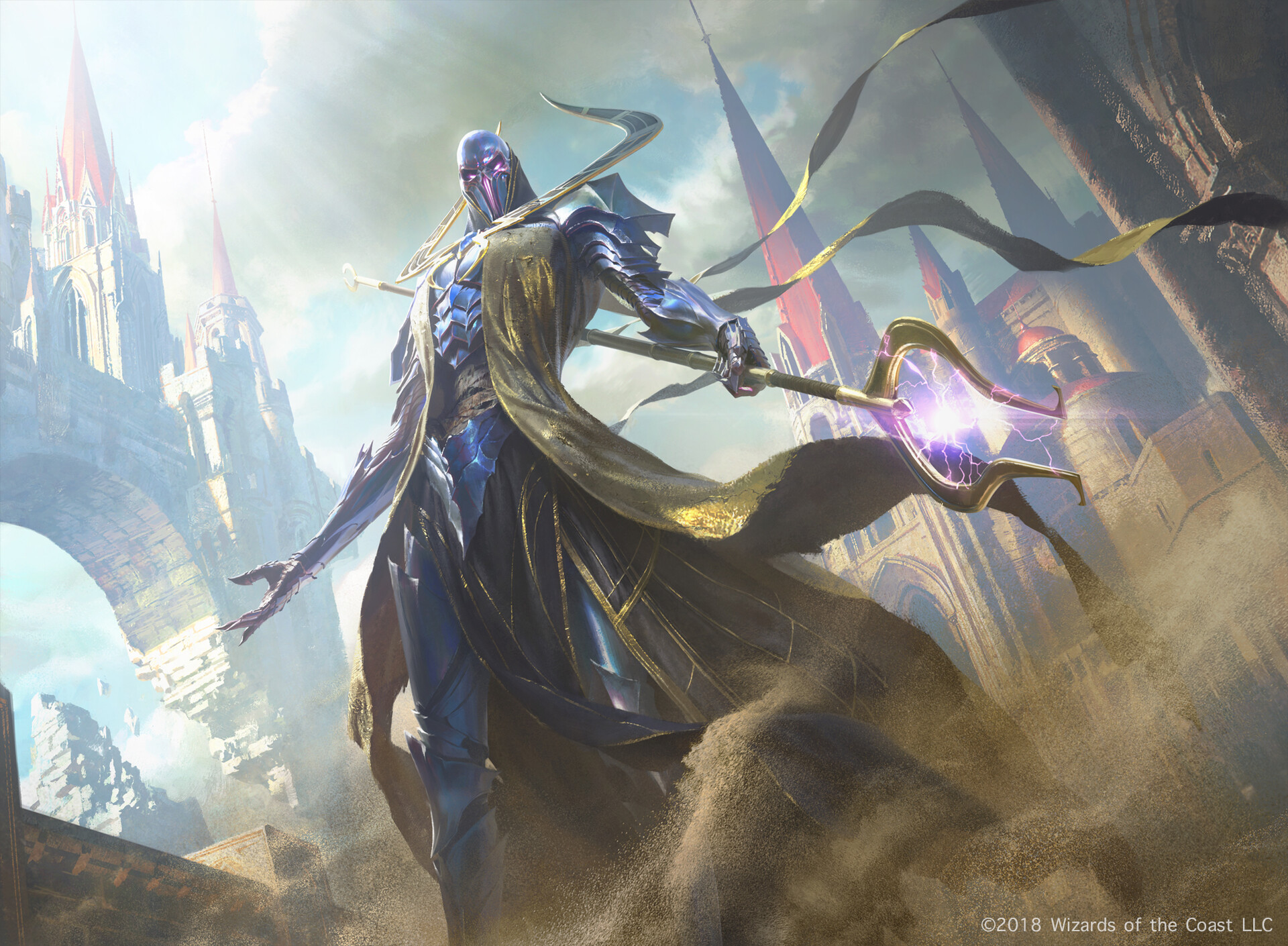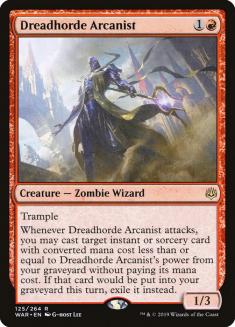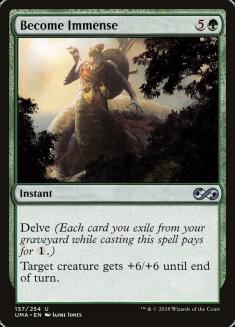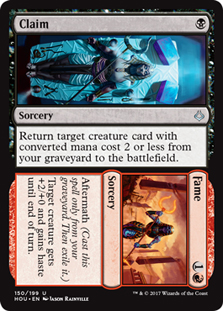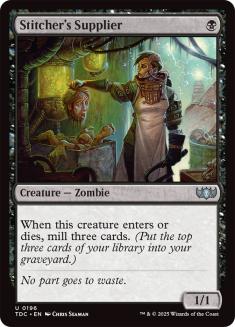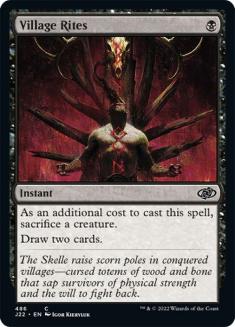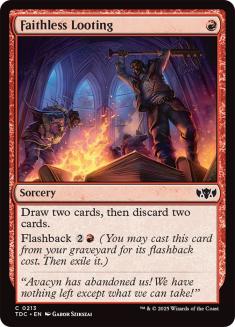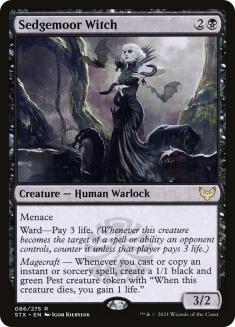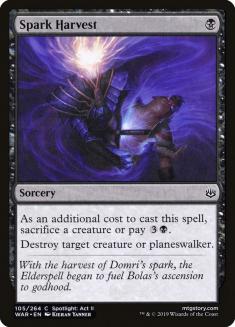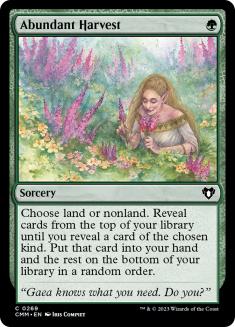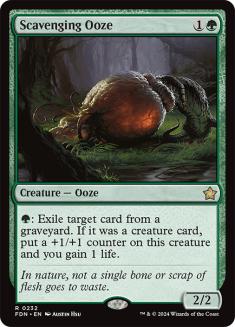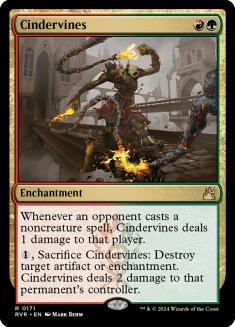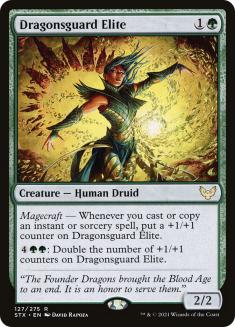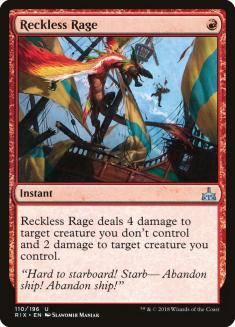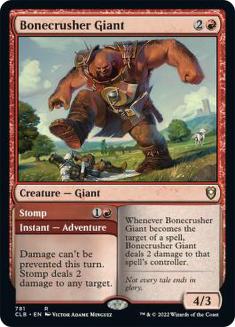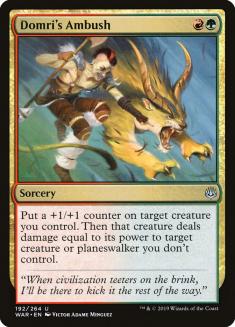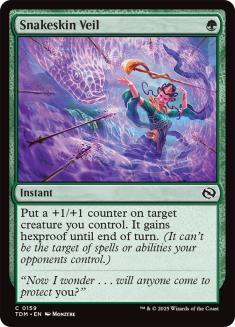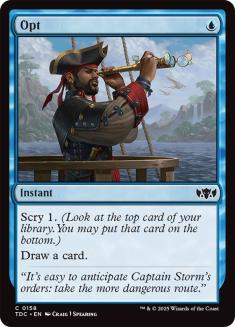Dreadhorde Arcanist will be the sole focus of today’s article. More specifically, I’ll be going over multiple Dreadhorde Arcanist builds in Historic and seeing how they match up. The core of each is just Dreadhorde Arcanist, with a lot of fluctuation in interactive tools. The influx of new and interesting cards via the Mystical Archive has completely changed the identity of the format. We’ve gained so many more cheap cards that can be cast by Dreadhorde Arcanist that building around it is almost trivial. It’s an incredible threat, but I guess that makes sense for a card that’s been banned in Legacy!
As Historic starts to slant lower and lower on the casting cost curve thanks to printing and reprinting of powerful Legacy staples, every single one-mana spell is an instant consideration for pairing with Dreadhorde Arcanist. The different color combinations and pairings mean you have a lot of different roads to go down. Do we go for interaction or gusto? Should we focus on killing creatures, burning face, or ripping our opponent’s hand apart? All options are viable and my true recommendation is picking two of those elements and pushing them to their natural limit.
One mostly unexplored aspect of Dreadhorde Arcanist is pumping its power so that you can cast more expensive spells. You get a small freeroll with Claim//Fame, but we don’t have anything like Become Immense (yet!) in Historic that’s worth building around. The old Temur Battle Rage builds from Modern need a few more sets to be back-coded before this style can be commonplace, but there are a few cards that offer some form of cheap interaction while pumping Dreadhorde Arcanist, but we’ll get to those in a bit. Just know that once Become Immense (or something similar) is added to Historic, that could add an entirely new dimension to this archetype.
Consistency is Key
Creatures (15)
Lands (19)
Spells (26)

First up, we have the version that basically everyone should know by now. Rakdos Arcanist (Lurrus) thrives on consistency above all else. Playing two colors is a great way to make sure you can cast your spells on time and prevent fumbling in the early turns more often than not. But what are the strengths of this build specifically? What are the focal points?
Village Rites is one of the major reasons to play this deck. Sacrificing a small creature or token from Young Pyromancer to draw two cards is much easier than it seems at first glance. When you add Claim the Firstborn into the mix, or just the front half cast of Kroxa, you see how much fodder you have to sacrifice to it. Drawing two cards in response to a removal spell on your Young Pyromancer is also pretty sick.
Stitcher’s Supplier in the mix means we can fill the graveyard more easily. Finding Kroxa becomes trivial, which in turn lets you focus on covering the battlefield instead of digging for a win condition. It also blocks, which is oddly strong in this archetype. Having a few little ways to protect your life total against Collected Company decks and the like is much better than I ever anticipated. Ever since playing with Hogaak, Arisen Necropolis, I’ve gained a newfound respect for Stitcher’s Supplier, and recognize it as one of the better enablers in any format it’s in. When you add Village Rites to the mix, Stitcher’s Supplier becomes a true engine. It almost feels like you’re comboing off.
The other major focal point of this deck is Claim // Fame, one of the most efficient reanimation spells of all time. It works well with Dreadhorde Arcanist on both sides, allowing you to bring back a small threat that packs a punch or giving your Dreadhorde Arcanist haste and a little boost. That boost lets you cast a three-mana spell. That haste lets you bury your opponent with card advantage from a bad position. It works well with your other cards, like Young Pyromancer or just bonking your opponent with a Kroxa trigger. Claim // Fame has been and continues to be my favorite part of this entire archetype.
Weaknesses of this archetype come mostly in the form of having too much interaction. Drawing too many discard spells against aggro or removal spells against control can leave you far behind. Those weaknesses are often shored up after sideboard, but the first game of the match can easily end with two or three dead cards in hand.
The addition of Faithless Looting to the format alleviates this pressure considerably. Turning dead cards into actual resources has always been a major draw for Faithless Looting in fair decks. If you’ve ever played Mardu Pyromancer in Modern, you’ll know what I’m talking about. So many weak hands are “fixed” by casting a single Faithless Looting. We have many ways to recoup that lost card economy, which is truly the easiest way to make Faithless Looting worth it.
I don’t have to sing the accolades of Lurrus of the Dream-Den. Even though it’s significantly worse than it used to be, it’s still excellent, and one of the many reasons to play this version of the deck. Not every Dreadhorde Arcanist deck can play Lurrus, but you need a very good reason not to.
And Now for Something a Little Different
Creatures (16)
- 4 Young Pyromancer
- 4 Dreadhorde Arcanist
- 2 Ox of Agonas
- 2 Kroxa, Titan of Death's Hunger
- 4 Sedgemoor Witch
Lands (19)
Spells (25)

User JohnRamosMTG brings us a unique take on Rakdos Arcanist. This build was the highest-performing Rakdos Arcanist (of any type) in the most recent Insight Esports $5K Open. If you’ve kept up with the results of these tournaments on MTGMelee over the last few weeks, you should know that the competition is stiff. If this version was the best-performing one last weekend, chances are you should be considering it over the more traditional version.
This is the obvious “upgrade” to the deck but it takes the place of Lurrus as your companion. When your wheels are all turning, cards like Young Pyromancer and Sedgemoor Witch can bury opponents quickly. Having more virtual copies of this effect means we have a higher threat density and a bit of redundance in our effects. Sedgemoor Witch is slightly more expensive, but it punishes the opponent when they kill it and the tokens it makes are actually quite good for playing defense. Gaining some precious life points in a pinch is sweet.
When you have more token producers, cards that care about having random bodies around also get a lot better. The one downside to “normal” versions of Rakdos Arcanist is that their removal doesn’t quite get the job done sometimes. When you play a ton of creatures that create more bodies with ease, Spark Harvest becomes one of the most efficient removal spells of all time. It handles just about every threat an opponent could throw at you, and it does it for one mana. Obviously that might mean jumping through a hoop or two, but it cannot be stressed how good it is because it only costs one mana. Being able to recast it from Dreadhorde Arcanist can save your bacon.
Because of those extra bodies, Village Rites can be much stronger as well. This version doesn’t play Claim the Firstborn or Stitcher’s Supplier, so it’s probably a wash in the long run, but having either of your token generators on the battlefield makes Village Rites outrageous.
Green Is the New Blue
Creatures (12)
Lands (22)
Spells (26)

Traditionally speaking, playing Dreadhorde Arcanist means playing red and black because black offers the best widespread interaction: discard spells. Thoughtseize and Inquisition of Kozilek are outrageous with Arcanist, offering a small point of protection in the early turns, as well as a torrent of disruption against combo or control. A single discard spell can double as your way to slow the opponent down as well as stripping them of their one way to kill Arcanist.
Blue was the color that offered card advantage, but worse forms of disruption. If you wanted Dreadhorde Arcanist to rebuy a true resource, your choices were mostly limited to Serum Visions in Modern or Ponder / Brainstorm in Legacy. Grixis Arcanist was one of the more interesting builds in Modern but it felt like blue was offered the least amount of diversity. Once Village Rites became a thing, Historic decks built around Dreadhorde Arcanist didn’t really have the need to splash for Opt.
If you wanted card advantage but didn’t want to play blue or Village Rites, you were out of luck, until now.
On the day this card was previewed, I was salivating at the thought of casting it with Dreadhorde Arcanist. Abundant Harvest meant I could play a card selection spell without having to play blue. Cards like Ponder and Opt are specifically used to smooth your draws, but that type of effect was mostly limited to blue. We’ve seen variations on that type of effect see play, like Ancient Stirrings or Oath of Nissa, but none of them really worked in the same way. Abundant Harvest changes all that.
The Jund archetype in Modern doesn’t really do “card selection.” The cards you draw are the cards you play and you just have to accept that. With Abundant Harvest, that all changes. Having a piece of card selection like that allows us to play like a blue deck with green threats. In Modern, I would likely be building Jund with Tarmogoyf and Dreadhorde Arcanist if Abundant Harvest were legal yet. Tarmogoyf has always been the “splash” threat in your removal/disruption package. It hits hard, but you’re missing out on some of those true card selection or card advantage elements in favor of a clock that closes the game quickly.
Now we get the best of both worlds — black is our disruption color and red features all the finesse. In the future, if they keep printing all the hits into Historic, chances are we’ll be casting Abrupt Decay in this shell before the end of the year. Tarmogoyf might be close behind. For now, green is offering Scavenging Ooze and a few utility spells, but Scavenging Ooze is a boss in this style of deck. When it was first added to Modern, I wasn’t surprised at how easily it fit into all the attrition archetypes, even though Tarmogoyf was everyone’s main squeeze. Now, without Tarmogoyf, Scavenging Ooze will shine.
A true asset to the sideboard, Cindervines offers unique disruption. Against some opponents, having a Naturalize effect that can deal some damage is huge. In other matchups, a single Cindervines might be tough for your opponent to beat if it never leaves the battlefield. Getting a second on the battlefield in the early turns will often be lights out for spell-based opponents.
I learned firsthand just how powerful Cindervines can be in the right matchup, as it was a nightmare card for all forms of Wilderness Reclamation. While it’s more theoretical in this build, I very much appreciate versatile cards that pair nicely with other forms of disruption. Weird permanents that apply pressure or disrupt the opponent are valuable, and will ultimately create a whirlwind of disruption that hits your opponent from too many angles. If you use multiple forms of disruption to attack an opponent whose end-game is more powerful than yours, you can put them into positions where no card can save them. Discard like Thoughtseize and Inquisition of Kozilek can only get you so far in some matchups, so having that side-swipe disruptive piece will often be the nail in the coffin.
This type of strategy is rather potent against oddball decks. I’ve heard some rumblings that Taking Turns is pretty good right now, so having an absolute hammer for that matchup can feel pretty good. Cindervines is one of those cards that you will rarely have trouble finding room for. I love it when I’m playing with it. I loathe it when I’m playing against it.
Jund is my favorite version of the deck so far. Sometimes I just feel like I’m playing a different format. Abundant Harvest takes away a lot of pressure on the early turns to hit land drops or keep from flooding. When you combine it with some of the most potent disruption in the game of Magic and Dreadhorde Arcanist, what’s not to love?
Last but (Hopefully) Not Least
Creatures (15)
Lands (20)
Spells (25)

Let me start by saying that I loathe cards like Spell Pierce in a deck featuring Dreadhorde Arcanist. If you want disruption, play discard. I’ll also say that this deck is super-loose against combo or weird stuff because we aren’t playing that style of disruption. Since the format has become more interactive, playing a deck that doesn’t have dead cards makes a lot of sense. If you let the rest of the format do the job for you, and do it well enough, they should stamp out the archetypes that make playing Spell Pierce worth it.
Instead, we’re going to focus on building our deck to interact with creatures and opposing removal spells. That should be a fairly safe bet at the moment. Remember what I was saying about green having some great creatures to throw in the mix? This is what I’m talking about.
This new tool reminded me of Quirion Dryad upon first reading, but I casually tossed it aside since I haven’t gotten one of those types of cards to work in a long time. However, after seeing this card in action and trying it out for myself, I’m happy to report I was wrong. It’s great, and specifically good in Historic thanks to the influx of cheap spells. It also enables us to play cheap threats on theme, which allows us to play one of the more underrated removal spells of all time
I’m always looking for cheap cards to pair with Dreadhorde Arcanist, and what better than the removal spell of choice for Boros Feather from our old Pioneer days? Reckless Rage was quite good in those decks because it was full of cheap creatures that could survive the two damage. There were also a number of annoying creatures with four toughness that needed to be dealt with cheaply. Reckless Rage will be lackluster against decks trying to smother the battlefield with threats, but it will be extraordinary against cards that usually dominate red removal shells.
Because we don’t have any allegiance to Lurrus, Bonecrusher Giant is back with a vengeance. As always, it’s very good. It also bridges the gap in threats and spells, which is often problematic for decks that play Dreadhorde Arcanist. It gives us a slightly higher threat density without sacrificing interaction.
Both of these cards can pump Dreadhorde Arcanist. A single Domri’s Ambush on Dreadhorde Arcanist allows you to cast it a second time on the same turn, knocking off two creatures or planeswalkers with ease. Snakeskin Veil offers a surprising amount of utility. A small combat trick isn’t exactly a big deal, but every card being a double-up means you have more options in more spots. Dreadhorde Arcanist is also a perfect card to offer protection to, as untapping with it can end the game sometimes.
In Rakdos or Jund, Claim // Fame is a virtual proxy of this. While it doesn’t save your creature preemptively, it does provide you with more virtual copies in the hopes that your opponent can’t kill the last threat. Snakeskin Veil can do similar things, but you just need to have that one mana up on the right turn.
This trio of card selection gives our deck some cool play patterns with our threats. They help charge up our little creatures so they turn into big creatures, which can close the game rather quickly. Of all the builds we’ve seen, this version is by far the best at making sure we have something to do every single turn. This type of card selection is basically unheard-of in Modern, so it’s kinda cool to see it so prevalent in Historic.
Brainstorm is not at its best here, but it’s still pretty solid. Interestingly enough, Abundant Harvest can clear a bad Brainstorm, which means the two together offer unique card selection in a world without Scalding Tarn. It’ll be interesting to see if y’all take this build and try to smoosh Fabled Passage into it. I would advise against that, specifically because of how important it is that none of our lands enter the battlefield tapped.
While this version is probably not the best of the bunch, it has a place close to my heart because it’s doing all the things I want to be doing in a game of Magic. I also tend to resonate with Temur as a clan, as it embodies some of my favorite themes. At this stage in my career, I’ve learned to place a lot of value on things I enjoy. When the majority of Magic is being played alone in your room, it’s more important than ever to make sure that, first and foremost, you’re having a good time.
I’ve had so much fun playing with this card in virtually every format where it’s legal. When Dreadhorde Arcanist first came out, I bought quite a few because they were so cheap. I had faith that it would become one of the best creatures ever printed. I called my shot on it changing the face of Legacy a day or two after it was previewed.
As more and more cards get released into the Historic wilds, we’re going to have to look at every single one-mana instant and sorcery to see if it deserves a slot alongside the champ. In many ways, that can add some value to a deckbuilder’s arsenal. After all, I’m always looking for more candidates to go into my Temur Box™. I just might have to change the name to Arcanist Box™ and expand the color scheme a bit.
I’ve had a ton of fun brewing new decks in Historic, and Dreadhorde Arcanist is just a pet project I’ve had for a while now. The addition of Abundant Harvest has changed how I look at the card, which should be all you need to know about how good they are together.

